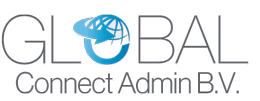
As the new European Parliament members were elected in June and they had the first plenary session on the 16th of July, this article aims to give an update on the measures adopted by the new European Parliament.
On the first day of the new EU Parliament (17th of July), the EU annual budget draft was approved. The Council has agreed on its position for the 2025 EU draft budget, totaling €191.53 billion in commitments and €146.21 billion in payments, excluding appropriations for special instruments outside the (Multiannual Financial Frame) MFF. The Council emphasizes a cautious approach, highlighting the need for the 2025 budget to demonstrate EU solidarity with Ukraine and address related crises.
The Council believes the budget should be realistic, aligning with actual needs, ensuring prudent spending, and leaving enough flexibility under the MFF ceilings to handle unforeseen events and Union challenges. It should also provide sufficient resources for implementing EU policies and programs and honoring existing commitments promptly. The Council appreciates that the draft budget aligns with the revised EU multiannual financial framework (MFF 2021-2027), as per the European Council conclusions of 1 February 2024. It stresses the importance of adequately funding the priorities outlined in the MFF revision, considering the budgetary implementation of all programs and necessary reprioritization.
Next Steps
This agreement was reached by EU member state ambassadors (Coreper). The Council aims to formally adopt its position through a written procedure ending on 13 September 2024. This position will guide the Hungarian presidency in negotiating the 2025 EU budget with the European Parliament. The legal deadline for reaching an agreement on the annual budget is 18 November 2024 at midnight.
On the 22nd of July, the Council adopted a regulation for digital labelling of fertilizing products, marking the final step in the decision-making process. This regulation promotes digital labels for EU fertilizing products while maintaining physical labels where necessary, enhancing label readability, and simplifying supplier obligations.
Labels for the Digital Age
The updated regulation encourages digital labelling to reduce costs, bureaucracy, and environmental impact for producers. Digital labels will last at least 10 years from a product’s market entry. To protect vulnerable consumers or those with limited digital skills, information will still be available in physical form. Digital labels are also proposed for bulk products, with essential information displayed physically at the point of sale. The Commission can update digital labelling requirements through delegated acts.
Background
Digital labels, such as QR codes or barcodes, link to a web page with label information, significantly reducing labelling costs and simplifying updates. They offer more and better-quality information than physical labels, which can be hard to read on small packages. However, digital literacy varies, and some vulnerable groups may struggle with digital labels.
In the EU, digital labelling is already used for some chemical-containing products like batteries, and similar rules are being considered for other products, including detergents, cosmetics, and chemicals. Simplifying labelling obligations is expected to save large companies €57,000 annually and SMEs €4,500 annually.
Nonetheless, on the 22nd of July, the Council formally adopted updated fisheries measures for the North-East Atlantic Fisheries Commission (NEAFC) area. This regulation integrates new management, conservation, and control rules into EU law, along with specific control measures for certain pelagic species agreed upon during coastal states consultations. The new regulation consolidates all NEAFC measures previously spread across different regulations into a single document.
Key Updates
The updated NEAFC measures include enhanced controls on transshipment operations at sea, regulations on vessel waste, and procedures for retrieving lost gear. New rules mandate the use of camera and sensor technologies to monitor landing and processing facilities for certain pelagic species landings exceeding 10 tons, provided more than 3,000 tons of those stocks are weighed within a calendar year.
Aiming to improve fisheries sustainability, the regulation prohibits the discarding or releasing of catches for 22 additional species, including cod, common sole, and plaice. To protect vulnerable marine ecosystems such as deep-sea corals and sponges, the ban on bottom fishing in certain areas is extended until the end of 2027.
The regulation also implements control measures for four pelagic fisheries in the North-East Atlantic: mackerel, horse mackerel, blue whiting, and herring. These measures were agreed upon by the EU, Faroe Islands, Greenland, Iceland, Norway, and the UK during coastal states consultations.
Background
NEAFC, the regional fisheries management organization responsible for the North-East Atlantic, enforces measures binding on its contracting parties, including the EU, unless there are objections.
References
European Council . (2024, July 22). Chemicals: Council adopts legislation on fertilisers labelling. Retrieved from European Council : https://www.consilium.europa.eu/en/press/press-releases/2024/07/22/chemicals-council-adopts-legislation-on-fertilisers-labelling/
European Council . (2024, July 22). Council adopts updated fisheries measures in the North-East Atlantic. Retrieved from European Council : https://www.consilium.europa.eu/en/press/press-releases/2024/07/22/council-adopts-updated-fisheries-measures-in-the-north-east-atlantic/
European Council. (2024, July 19). EU annual budget for 2025: Council agrees its position on the draft budget. Retrieved from European Council: https://www.consilium.europa.eu/en/press/press-releases/2024/07/17/eu-annual-budget-for-2025-council-agrees-its-position-on-the-draft-budget/



